Inside the Royal Family's stunning trove of treasure
The royal treasure trove
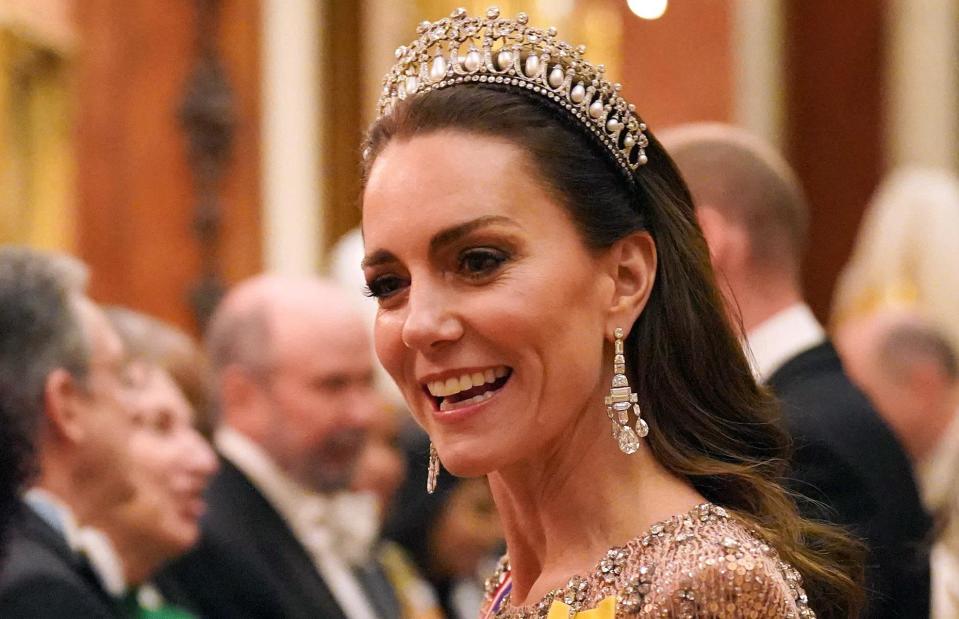
JONATHAN BRADY/POOL/AFP via Getty Images
The British Royal Family exhibited a dazzling array of jewels over the course of the last year.
From regal tiaras worn at state banquets to the breathtaking Crown Jewels displayed during the coronation of King Charles III, read on for a closer look and discover other impressive and surprising treasures in the royal trove.
All dollar amounts in US dollars.
Burmese Ruby Tiara
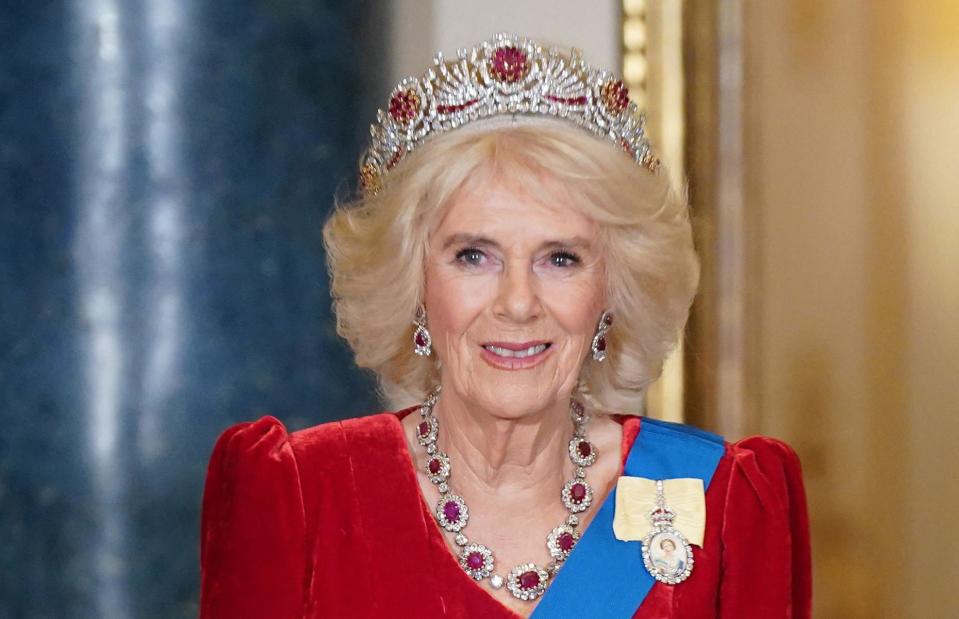
YUI MOK/POOL/AFP via Getty Images
King Charles and Queen Camilla hosted a state banquet at Buckingham Palace in November in honour of Yoon Suk Yeol, the President of South Korea, and First Lady Kim Keon-hee. Dressed impressively for the grand occasion, Queen Camilla donned the Burmese Ruby Tiara (pictured), commissioned by the late Queen Elizabeth II from the House of Garrard in 1973.
The tiara boasts 96 rubies gifted to Queen Elizabeth on her marriage to Prince Philip by the people of Burma (now known as Myanmar). Crafted in a series of rose motifs inspired by the Tudor Rose, the heraldic symbol of Britain, the tiara is estimated to be worth $6.4 million (£5m).
Strathmore Rose Tiara
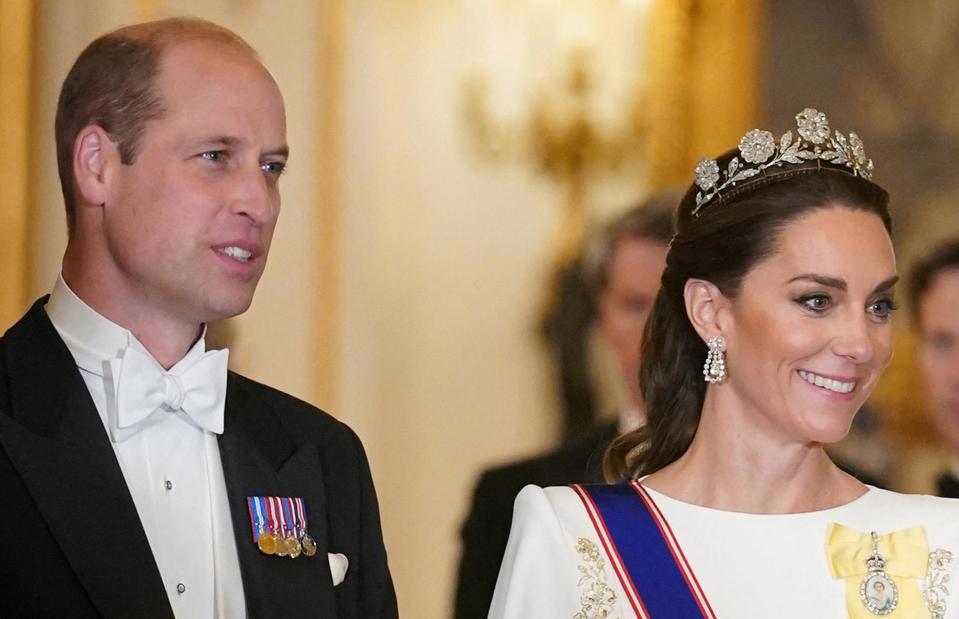
YUI MOK/POOL/AFP via Getty Images
At the same banquet, the Princess of Wales made history as the second person to wear the Strathmore Rose Tiara (pictured). The floral tiara, given to the Queen Mother in 1923, hadn't been seen by the public since the 1930s until Kate Middleton dazzled in it.
The elegant all-diamond tiara features silver and gold rose "prongs" adorned with rose-cut diamonds. Valued at around $638,900 (£500k), the tiara comes with two frames, allowing it to be worn on top of the head or across the forehead, reminiscent of the glamorous styles of the 1920s.
Queen Mary's Lover's Knot Tiara

JONATHAN BRADY/POOL/AFP via Getty Images
The Strathmore Rose isn't the only regal showstopper the Princess of Wales has worn recently. At the 2023 Diplomatic Reception, she donned the Queen Mary's Lover's Knot tiara (pictured). The glamorous accessory is a favourite of the Princess, and she's worn it to public events on 11 separate occasions between 2015 and 2023.
The tiara features intertwined lovers’ knots and diamond arches, complemented by large drop pearls hanging from its base. Originally crafted in 1913 by the House of Garrard for Queen Mary, it's valued at around $1.3 million (£1m).
St Edward’s Crown
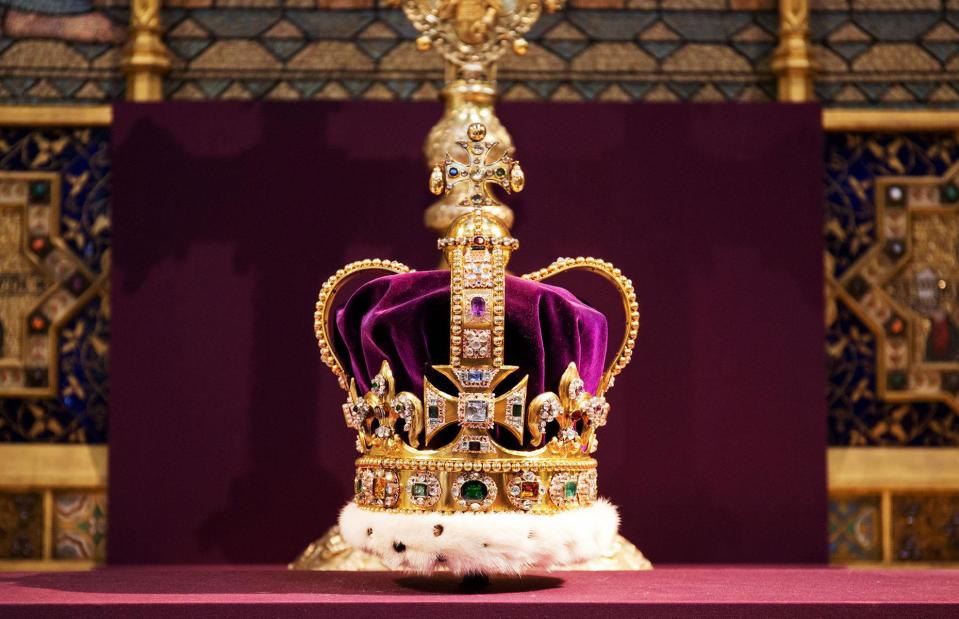
Jack Hill/The Times/PA Archive/PA Images
From tiaras to crowns. At his coronation, King Charles III wore the St Edward’s Crown – which is solid gold, weighs in at almost 5lbs (2.04kg), and is decorated with 444 precious and semi-precious stones. His mother, Elizabeth II, wore it only briefly in 1953 and never again, although it appears on her coat of arms.
The St Edward's Crown was made in 1661 for the coronation of Charles II after the previous medieval crown was melted down by Parliamentarians in 1649 during the English Civil War. According to a palace spokesperson, "St Edward's Crown, the historic centrepiece of the Crown Jewels, [was] removed from the Tower of London to allow for modification work to begin ahead of the Coronation" so it could be resized to fit the current king.
The crown jewels have no official valuation as they're not insured, though given the abundance of precious stones set within this showstopping crown, estimates suggest it's worth around $57 million (£45m).
Imperial State Crown

TOBY MELVILLE/AFP/Getty Images
The Imperial State Crown, which was last seen in public when it was placed on Queen Elizabeth II's coffin for her lying in state and funeral, is a relatively modern artefact.
Made in 1937 for the coronation of King George VI, the Imperial State Crown contains some of the most historic jewels in the royal collection, including the Black Prince’s Ruby, which is said to have been given to Edward, Prince of Wales (the Black Prince) in 1367. The crown is set with 2,868 diamonds, 17 sapphires, 11 emeralds, and hundreds of pearls. At the centre is the Cullinan II diamond, one of the largest in the world.
Once Charles III had been officially crowned, he switched the St Edward's Crown for the Imperial Crown for the procession from Westminster Abbey to Buckingham Palace. Queen Elizabeth II once admitted she found the 2.3lbs (1.06kg) headpiece so heavy that she couldn't look down when reading a speech or her “neck would break and it would fall off” – one of the “disadvantages” of crowns, she confessed.
Experts have estimated this exquisite crown is worth between $3.8 billion (£3bn) and $6.3 billion (£5bn), with the Cullinan II diamond alone worth a staggering $507 million (£400m).
Sceptre with the Cross
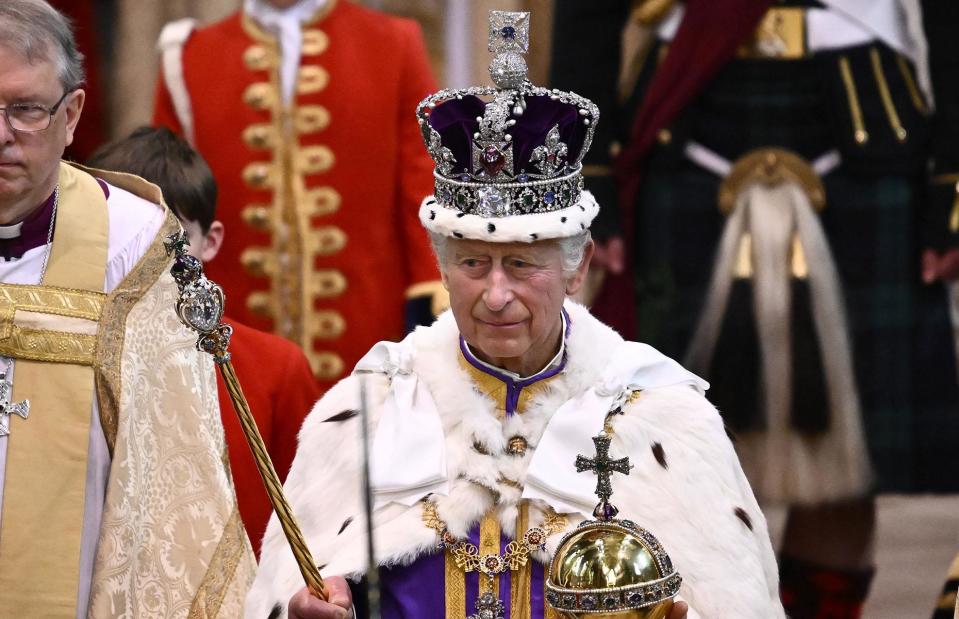
Gareth Cattermole/Getty Images
One of the most valuable items in the Royal Collection, the Sceptre with the Cross is presented to the monarch during their coronation.
Weighing over 2.2 lbs (1kg), it's been in use since 1661 but was transformed in 1910 with the addition of the Cullinan I diamond, the largest clear-cut diamond in the world, weighing 530.2 carats and estimated to be worth around $400 million (£315m).
Charles III carried the Sceptre with the Cross (pictured) during his coronation. According to Buckingham Palace, it "represents the sovereign's temporal power".
Sovereign's Orb
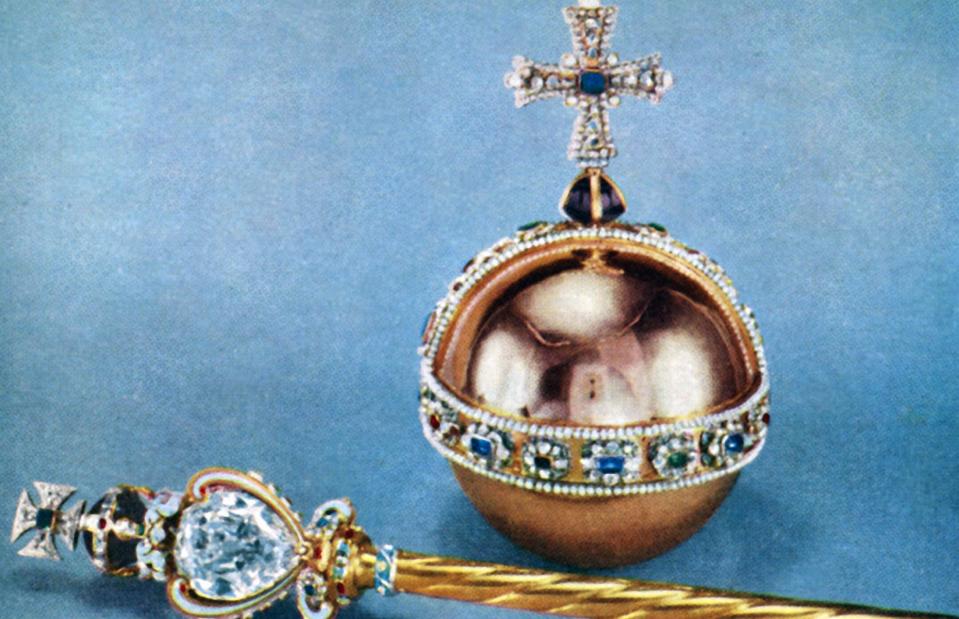
Heritage Images / Contributor / Getty Images
The Sovereign's Orb is usually seen alongside the Sceptre with the Cross – both were set on Queen Elizabeth's coffin during her funeral and played a key role in King Charles' coronation. Charles was handed the orb during his investiture, the part of the ceremony where he put on special coronation robes and was presented with his regalia.
Like the Sceptre with the Cross, the Sovereign's Orb was made for King Charles II in 1661. Made from hollow gold and adorned with an amethyst, diamonds, emeralds, rubies, sapphires, and pearls, it weighs almost 2.2lbs (1kg). While the orb is considered priceless, reports suggest it cost £1,150 in 1661, the equivalent of around $230,000 (£180k) today.
Crown of Queen Mary
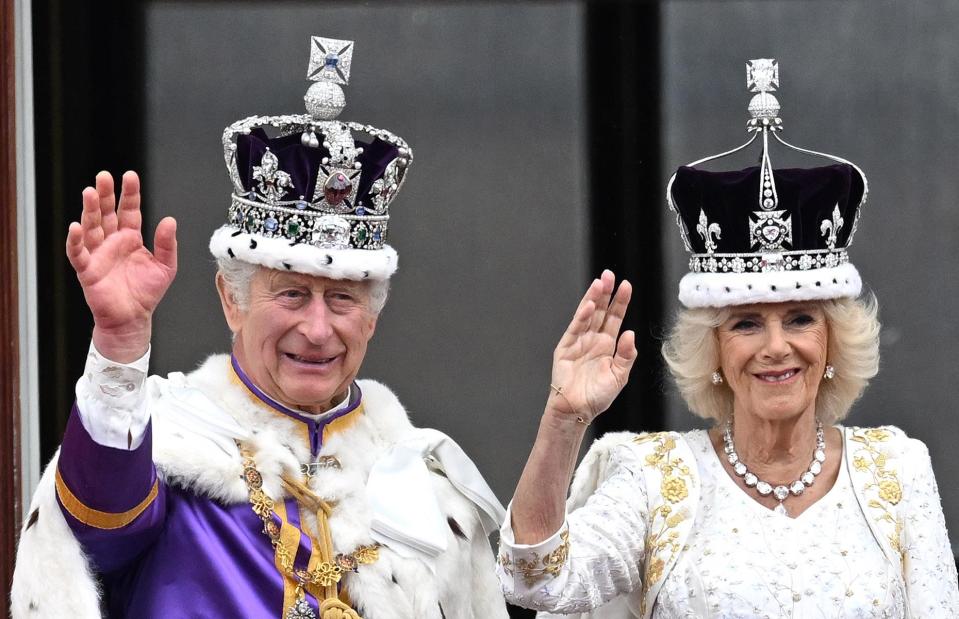
Samir Hussein/WireImage
When crowned Queen Consort, Camilla wore the Crown of Queen Mary for the ceremony. A special consort crown, it was bought by Mary of Teck – the wife of King George V – in 1911 and weighs 1.30lbs (590g).
According to the royal family, this marked the first time in recent history a consort used an existing crown rather than commissioning a new one. The Crown of Queen Mary was resized to fit Camilla and was modified to include some of Queen Elizabeth's favourite diamonds, the Cullinan III, IV, and V, as a tribute to the late royal. However, the precious Koh-i-Noor diamond was removed, as it's at the centre of a claim from India for it to be returned.
When accounting for the removal of the Koh-i-Noor, worth an estimated $66.1 million (£52m) and the addition of the new diamonds, the pricey crown is estimated to be worth around $508 million (£400m).
Cullinan III and IV diamonds brooch

Peter Macdiarmid/Getty Images
The Cullinan Diamond, which weighed 3,106 carats in its rough state, was discovered in 1905 at a South African mine and presented to King Edward VII as a gift.
It was cut down into nine diamonds, the largest of which are in the Sceptre with the Cross and the Imperial State Crown. Diamonds III and IV, weighing 94.4 and 63.6 carats, respectively, were made into a brooch. It's estimated to be worth over $63.5 million (£50m).
Imperial State Crown of George I

JULIAN STRATENSCHULTE/dpa
Made in 1714 for King George I, this crown replaced that of Charles II. It took some of the old crown’s jewels and pearls, adding 265 new pearls, 160 diamonds, six emeralds, and two sapphires. It was used until 1838, when it was emptied of its jewels and discarded by the royal family.
It was acquired by the Brunei royal family in 1995 and valued at $740,000, that's $1.5 million (£1.2m) in today's money. It was later returned to the UK Crown to be displayed at the Tower of London.
Crown of Queen Elizabeth the Queen Mother
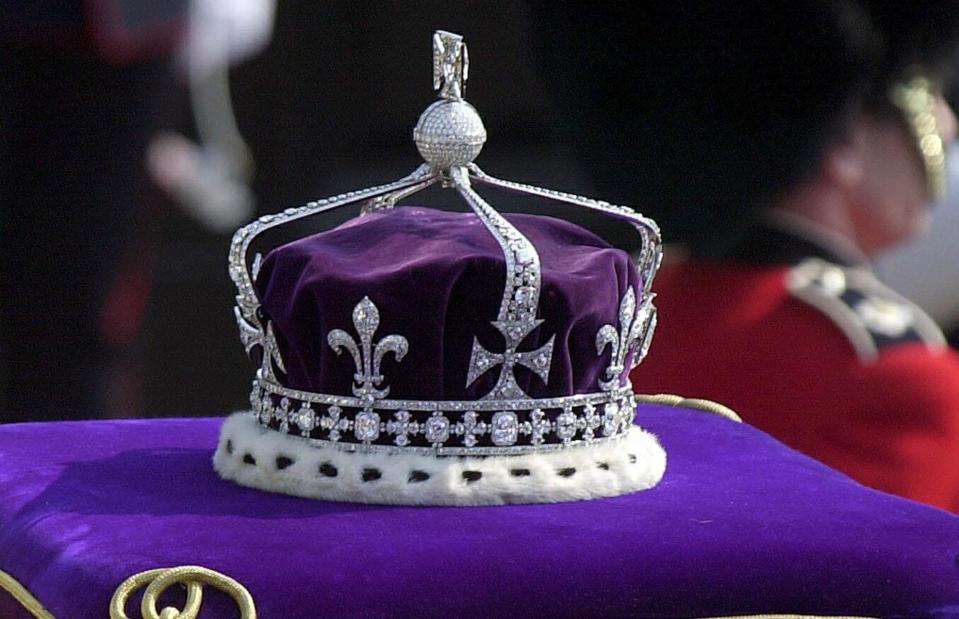
Toby Melville/PA Archive/PA Images
This crown was made in 1937 for Queen Elizabeth, the late Queen Mother, for the coronation of her husband, George VI. After his death, she wore it for the coronation of her daughter, Queen Elizabeth II.
It normally contains 2,800 diamonds, including the previously mentioned 105-carat Koh-i-Noor, which was originally set in the crown of Queen Mary. It's the only crown in the Crown Jewels to be made of platinum and was placed on the Queen Mother's coffin for her funeral in 2002 (pictured).
Victoria’s Small Diamond Crown
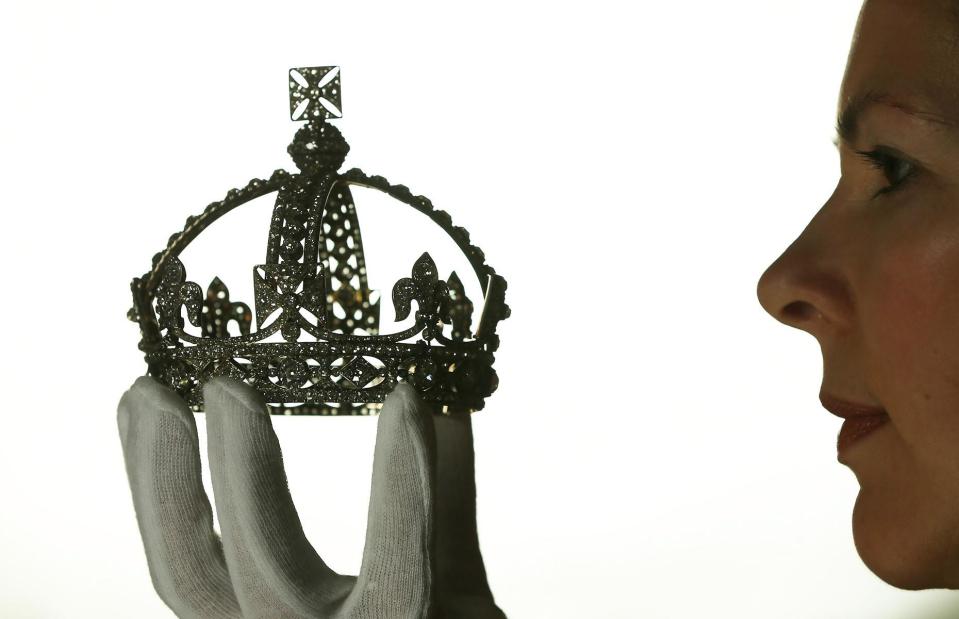
Peter Macdiarmid/Getty Images
This crown is a miniature made at the behest of Queen Victoria in 1870 to wear over her widow's cap following the death of her husband, Prince Albert. It contains 1,162 brilliant and 138 rose-cut diamonds weighing 132 carats, taken from a large necklace belonging to the queen.
Diamonds, unlike coloured gems, were acceptable to wear in mourning. The crown was Queen Victoria’s personal possession, but she left it to the Crown, and it's now on display at the Tower of London.
Diamond diadem
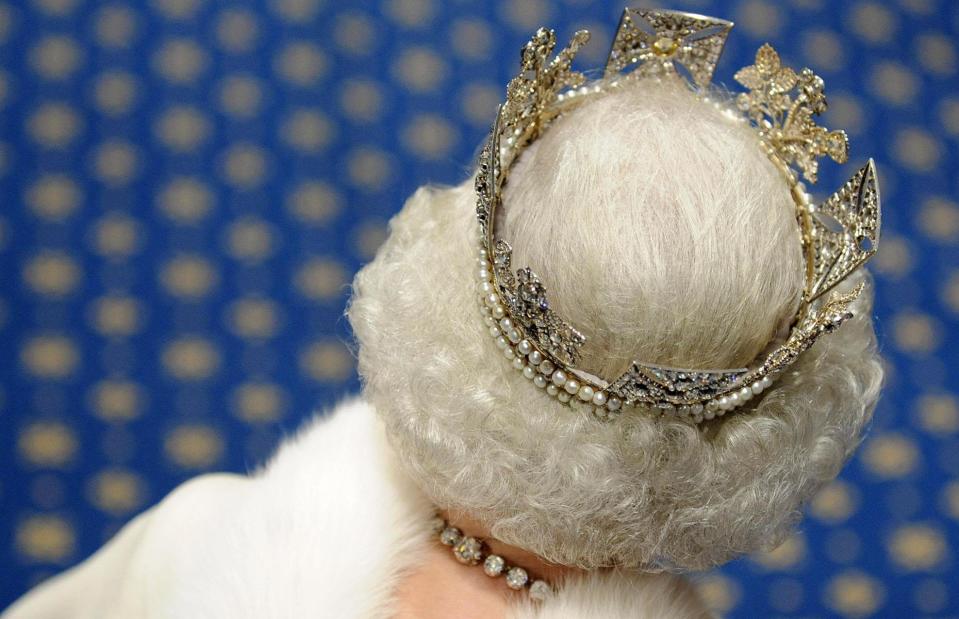
Toby Melville/PA Archive/PA Images
Featuring English roses, Scottish thistles, and Irish shamrocks instead of the fleur-de-lis usually seen on British crowns, this diamond diadem contains 1,333 diamonds, including a four-carat yellow stone.
The Queen wore the diadem on her way to and from Westminster to give her speech at each State Opening of Parliament (during which she would swap it for the heavier Imperial State Crown).
George IV commissioned the diadem in 1820 for £8,216, which is around $835,000 (£656k) in today's money.
Queen Mary's Diamond Bandeau
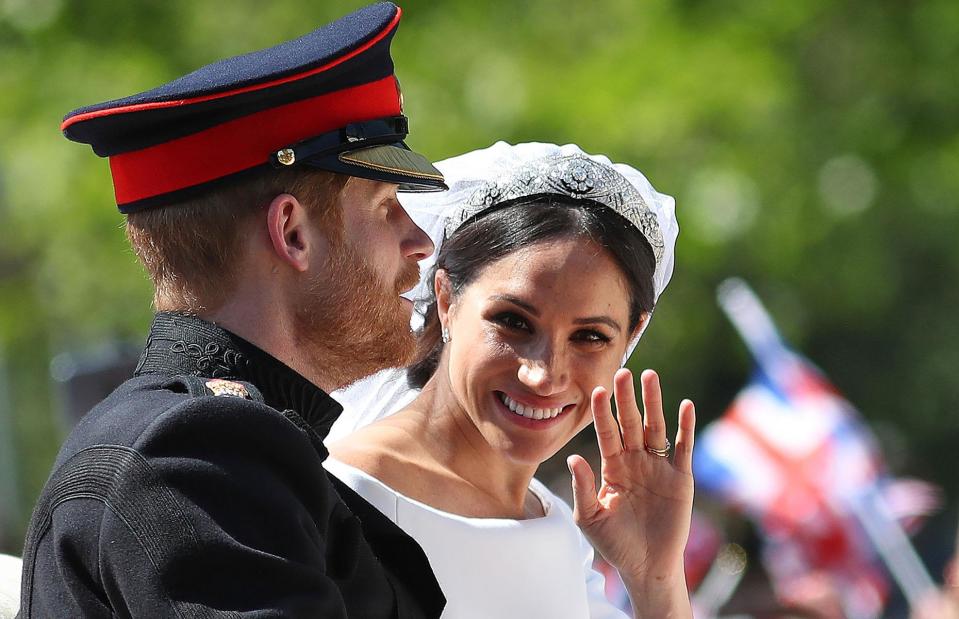
Daniel LEAL-OLIVAS/AFP
Royal brides are traditionally loaned heirlooms from the royal collection on their wedding day, and Meghan Markle chose this tiara for her wedding to Prince Harry in 2018.
It was owned by Prince Harry’s great-great-grandmother, Queen Mary, and was made in 1932. It's formed as a flexible band of 11 sections set with diamonds, with a detachable brooch as its centrepiece and a further 10 diamonds. The brooch was given to Mary as a wedding present in 1893 by the County of Lincoln.
The Duchess of Sussex wore the tiara to hold her five-metre (16-foot) veil in place as she arrived at St George’s Chapel, Windsor. Its estimated value is $2.5 million (£2m).
Delhi Durbar Tiara
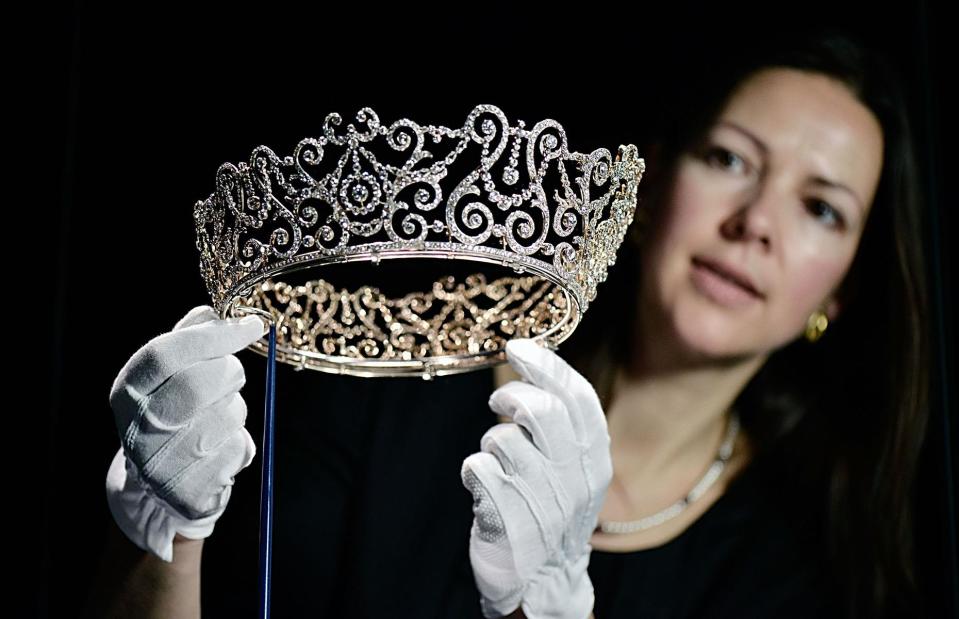
Bethany Clarke/Getty Images
This tiara was made in 1911 for Queen Mary, using diamonds from a dismantled tiara. She wore it for a formal reception or "durbar" in Delhi, India to mark the coronation of her husband King George V, and their adoption of the titles Emperor and Empress of India. This was one of the only Indian coronation durbars to be attended by the royals instead of their representatives.
Elizabeth II lent this tiara to the then-Duchess of Cornwall Camilla in 2005. Its estimated value is $10.8 million (£8.5m).
Jewels and crowns aside, let's look at some other valuable items in the royal treasure trove...
Mosaic Fabergé egg

Dominic Lipinski/PA Archive/PA Images
Jeweller Peter Carl Fabergé made 50 Easter eggs for the last Russian tsar, Nicholas II, to give to his wife. Three now sit in the Royal Collection, acquired by Queen Mary in 1933.
The Mosaic Egg (pictured) is made with diamonds, rubies, topaz, sapphires, garnets, pearls, and emeralds. It contains a "surprise" medallion inside, painted with the portraits of Nicholas and Alexandra's five children.
Lobmeyr glass chandelier
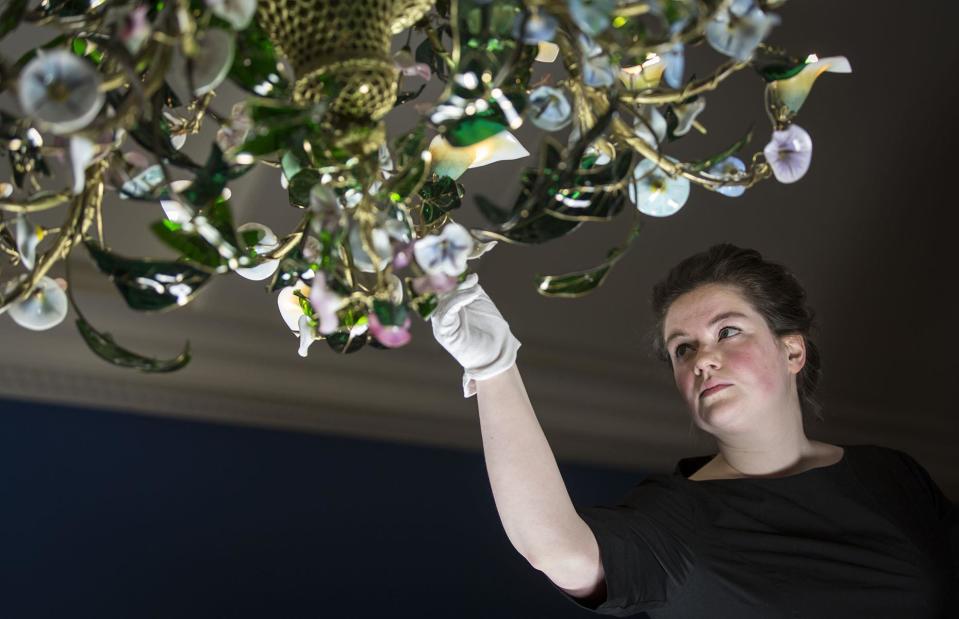
Rob Stothard/Getty Images
No one is quite sure how or when this ornate floral Victorian chandelier, made by the famed Viennese Lobmeyr glass company in 1855, came to arrive in the Royal Collection, but it seems likely it was bought by Queen Victoria and Prince Albert.
It lights up the Audience Room at Osborne House on the Isle of Wight. Other, less ornate 19th-century Lobmeyr chandeliers retail for more than $25,000 (£19.6k).
Astronomical clock
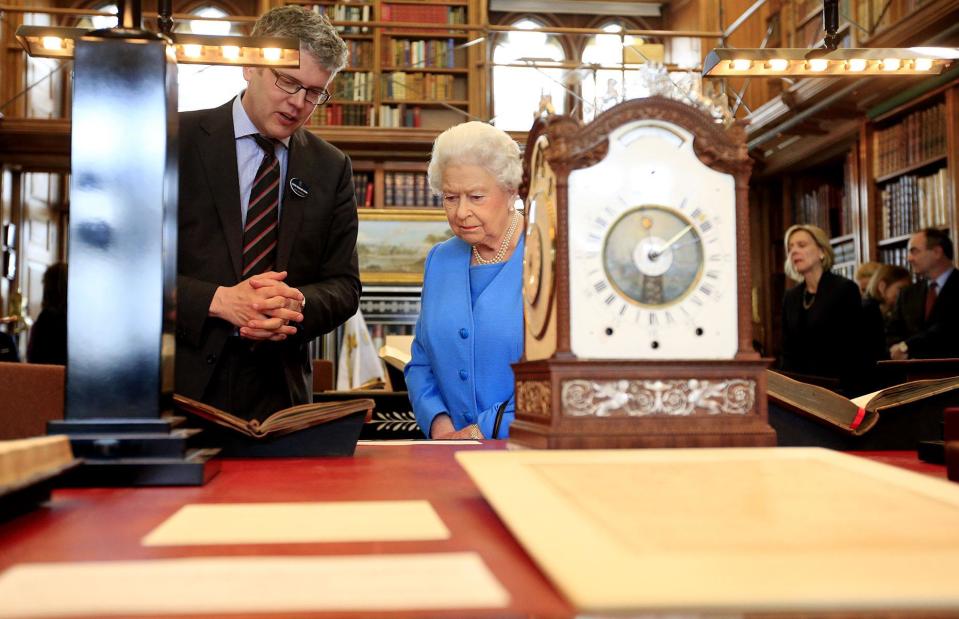
Jonathan Brady - WPA Pool/Getty Images
This 1765 Eardley Norton clock would have been the ultimate gadget of its day, showing the time at 30 locations across the globe relative to Greenwich Mean Time, a year calendar, an orrery of the Solar System, ages and phases of the moon, and high and low water at 32 geographical seaports.
It was bought by George III for his dressing room at Buckingham Palace for £1,042, or around $192,700 (£152k) in today's money.
The Royal Family in 1846 – Franz Xaver Winterhalter

Dominic Lipinski/PA Archive/PA Images
In 1846, Queen Victoria persuaded the French king Louis-Philippe to release Winterhalter from his position as court painter so he could paint the British Royal Family to place in her residence at Osborne House.
Her favourite family picture, it shows Victoria and Albert adorned in jewellery and insignia with their then five children. It now hangs in the East Gallery at Buckingham Palace.
Cimabue's Madonna Carried in Procession – Frederic Leighton

Dominic Lipinski/PA Archive/PA Images
This huge painting was Leighton's first major work. It was shown at the Royal Academy in London in 1855, and Queen Victoria bought it for 600 guineas on the opening day.
She wrote in her diary: "There was a very big picture by a man called Leighton. It is a beautiful painting… so bright and full of light. Albert was enchanted with it – so much so that he made me buy it".
The Calling of Saints Peter and Andrew – Caravaggio
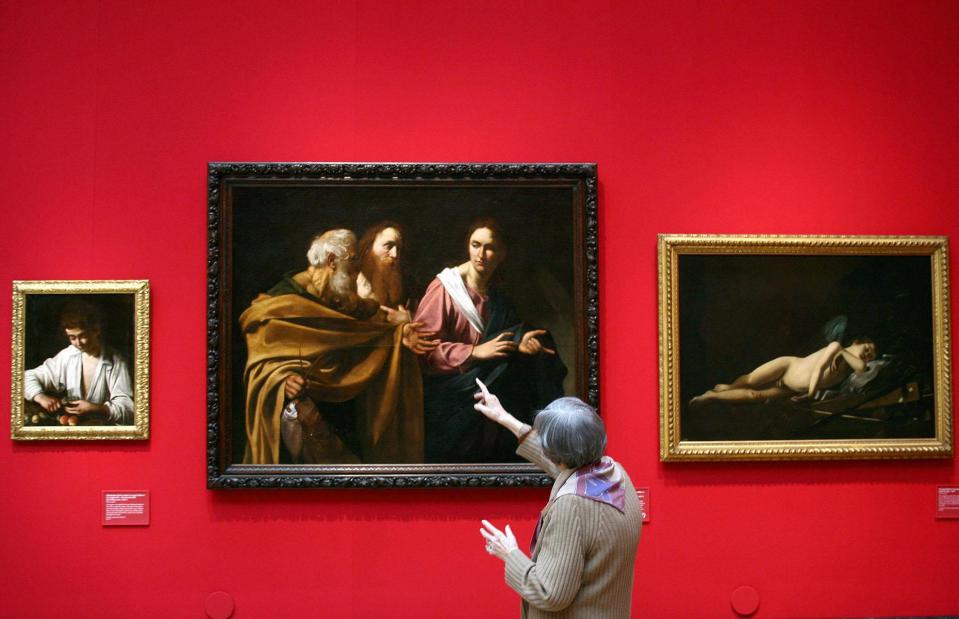
CHRIS YOUNG/AFP/Getty Images
This Caravaggio was kept at Hampton Court Palace for many years and was believed to be a worthless copy of the lost original. It was only in 2006, after it was restored and examined, that the Royal Collection declared it to be authentic – and it's likely worth more than $64 million (£50m).
The painting was bought by Charles I in 1637, sold during Cromwell’s time, and reacquired by Charles II, remaining in the royals' possession ever since.
Portrait of the Duke of Wellington – Sir Thomas Lawrence
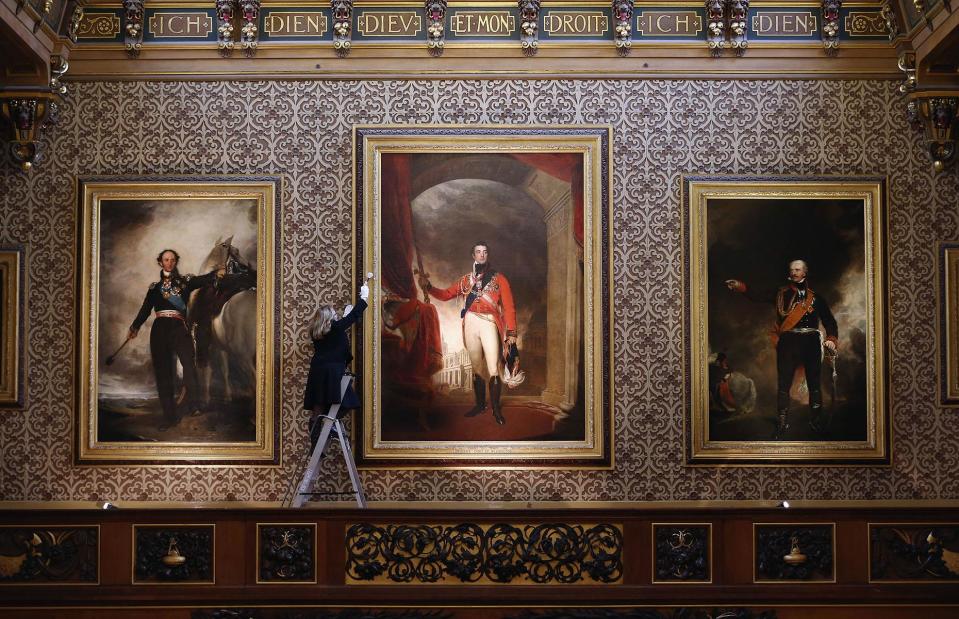
Dan Kitwood/Getty Images
George IV specially commissioned Lawrence to paint the leaders responsible for the defeat of Napoleon in 1814 and 1815. The king set aside the Waterloo Chamber in Windsor Castle especially for their display, where this portrait still hangs today.
Nymph sculpture – Antonio Canova
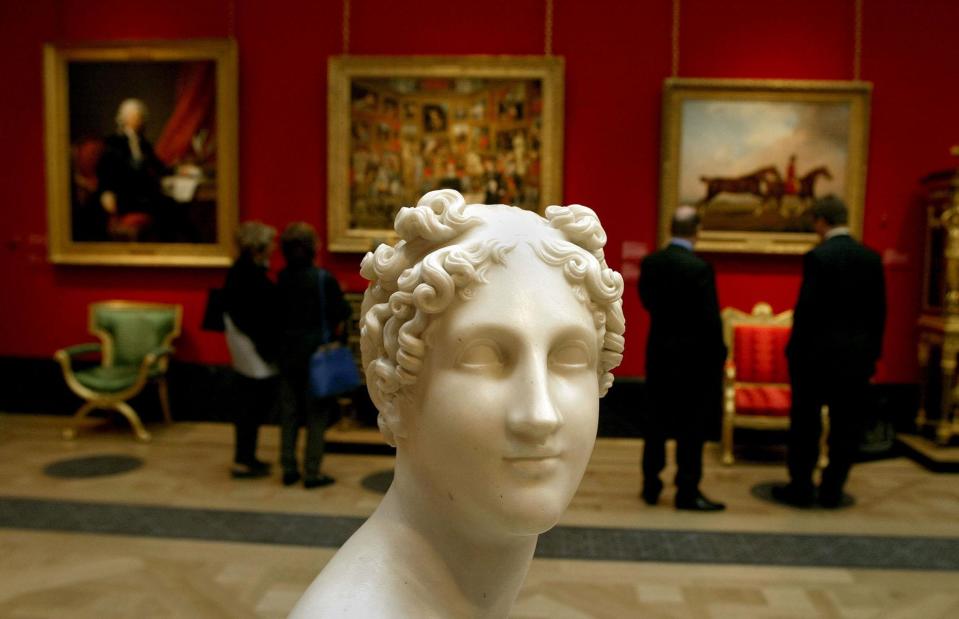
Sion Touhig/Getty Images
Antonio Canova spent his final years working on commissions for the future George IV. The marble fountain nymph was delivered in 1819 and installed in the Gothic conservatory of Carlton House (with detailed instructions on how to place and light it), while the other two, Dirce (pictured) and Mars and Venus, arrived in 1824, two years after Canova’s death.
Today, these sculptures are in the Grand Entrance and Marble Hall at Buckingham Palace.
Massacre of the Innocents – Pieter Bruegel the Elder
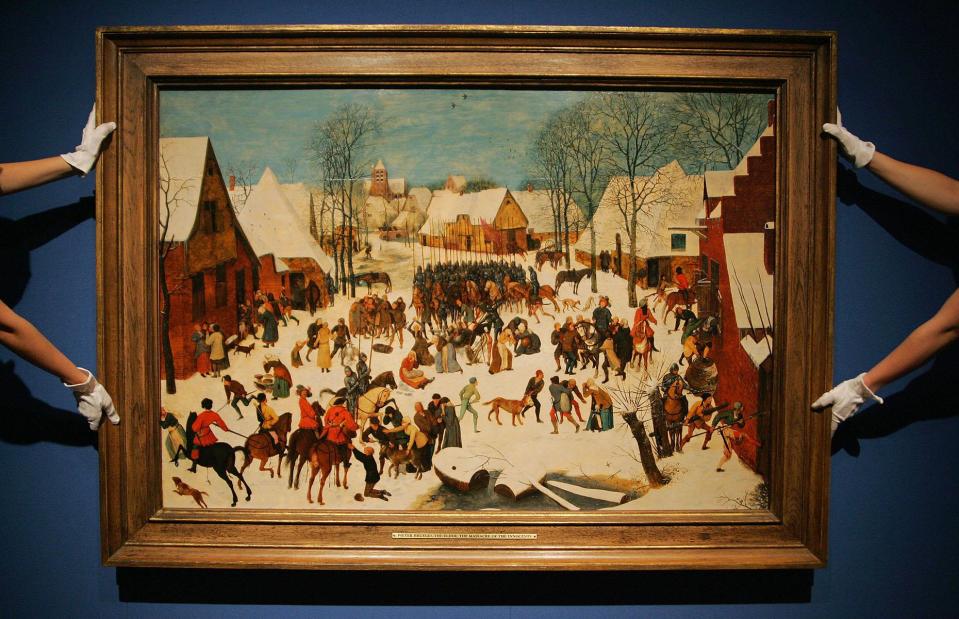
Geoff Caddick/AFP/Getty Images
This 16th-century painting by Pieter Bruegel the Elder was acquired over a century later by Charles II. Painted as a representation of the murder by King Herod’s soldiers of all male children in Palestine, it was set in Bruegel’s own time. But there are no bodies and no blood. The painting’s first owner, the Holy Roman Emperor Rudolph II, ordered that all the dead babies be painted out and replaced with animals, objects and food.
There are some 50 Flemish paintings from the 15th to 17th centuries in the King's Dressing Room at Windsor Castle.
Presumed self-portrait – Giovanni Benedetto Castiglione
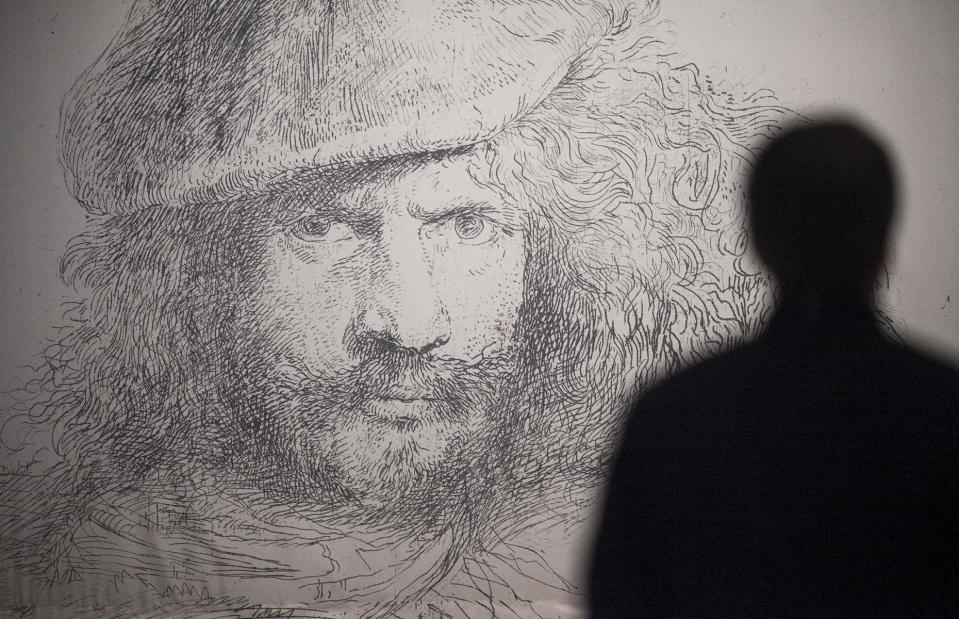
Dan Dennison/Getty Images
One of the great artists of the Baroque era, Castiglione was a painter who became famous for his drawings and prints. He fell from fame around a century after his death, but the Royal Collection holds what it says is the "finest" surviving set of his works.
This is believed to be a self-portrait and is thought to have been purchased from the British Consul in Venice by George III in 1762.
Agatha Bas – Rembrandt
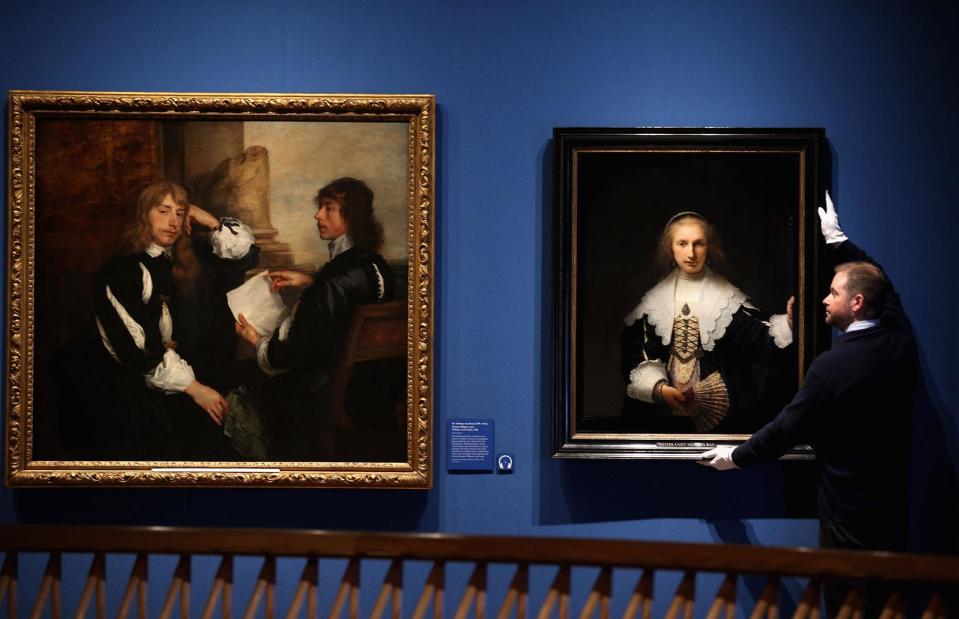
Jeff J Mitchell/Getty Images
"One of the most beautiful portraits" in the Royal Collection, this portrait of Agatha Bas (right) has a companion painting depicting Agatha’s wool merchant husband Nicolaes van Bambeeck, which hangs in Brussels' Musée Royal des Beaux-Arts.
There are five paintings by Rembrandt in the Royal Collection, the earliest of which, The Artist's Mother, was presented to Charles I before 1633 and was one of the first works by Rembrandt to reach England. It's on display in the Picture Gallery at Buckingham Palace.
HM Queen Elizabeth II – Lucian Freud

Sion Touhig/Getty Images
Not all pictures in the Royal Collection are inherited. This rather unflattering painting of the Queen (wearing her diamond diadem) was painted by Lucian Freud, the grandson of psychoanalyst Sigmund Freud, at the late British painter’s behest. The picture was declared a "travesty" by one UK newspaper when Freud presented it to the Queen in 2002.
Still, the painting is likely to be hugely valuable. Another of Freud’s works, Benefits Supervisor Sleeping, sold for $56.2 million (£44m) at auction in 2015.
Eos – Sir Edwin Landseer
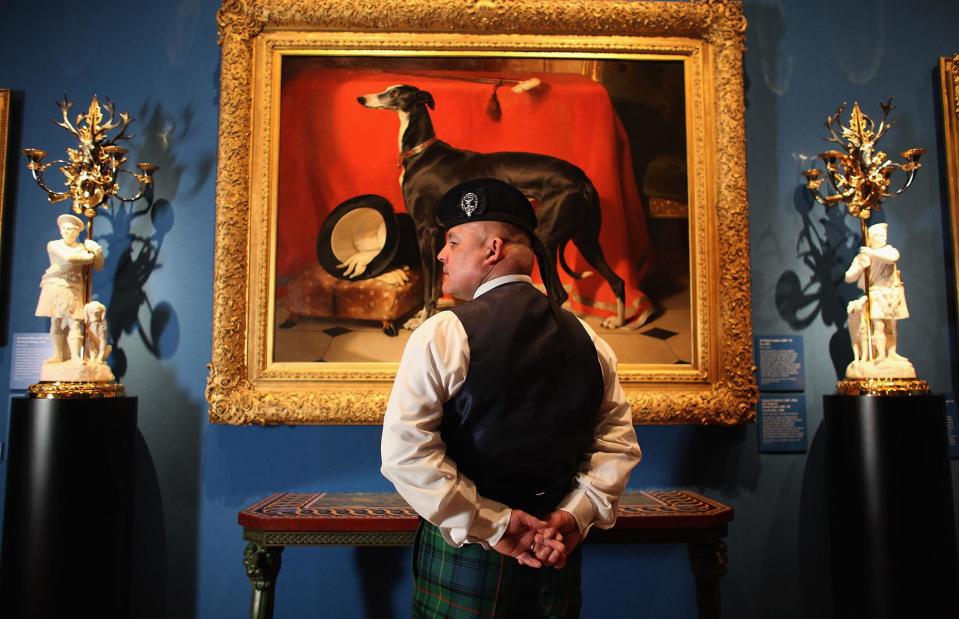
Jeff J Mitchell/Getty Images
Eos, the greyhound that accompanied Prince Albert when he came to the UK to marry Queen Victoria, features in several portraits and sculptures in the Royal Collection.
This painting by Sir Edwin Landseer is dated 1841 and was presented by Queen Victoria as a Christmas present to her husband. Landseer produced some 40 works for the royal couple. His Monarch of the Glen, one of the most recognisable paintings of Scotland, is valued at $10.3 million (£8.1m).
The Music Lesson – Johannes Vermeer

KOEN VAN WEEL/AFP/Getty Images
The Music Lesson is one of around 34 Vermeers in the world and probably one of the best-known paintings in the Royal Collection. The Dutch artist’s work rarely comes up for sale, but his A Young Woman Seated at the Virginals sold for $20.8 million (£16.3m) in 2004.
Leonard Da Vinci sketches
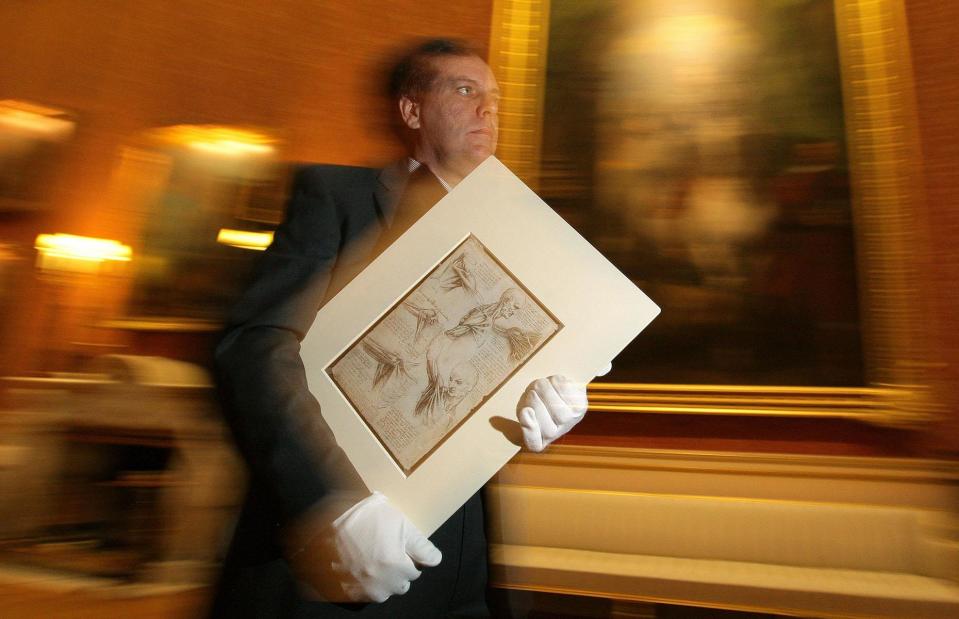
Dominic Lipinski/PA Archive/PA Images
One of the most extraordinary sets in the Royal Collection contains some 600 Leonardo Da Vinci drawings, including all his anatomical sketches, such as The Muscles of the Neck and Shoulder (pictured) from 1510-11.
They're presumed to have been acquired by Charles II, although it's not clear how or why.
Pop art – Andy Warhol

Oli Scarff/Getty Images
With so many Old Masters in her collection, it’s a surprise to learn the late Queen was a fan of contemporary art, but in 2012, four screen prints of her by Andy Warhol were bought for the Royal Collection. Made in 1985, they're based on a photograph taken in 1977 for the Queen’s Silver Jubilee.
It's unknown how much the Queen paid for her pictures, but Sotheby’s had recently sold another set from the same print run for $140,400 (£110k).
Twopenny Blue Mauritian stamp

Ben Curtis/PA Archive/PA Images
The King is the sixth monarch to inherit the Royal Philatelic Collection, thought to be worth $129 million (£101m). The centrepiece is an extremely rare Twopenny Blue Mauritian stamp from 1847, valued at $2.59 million (£2m) and the first stamp to be issued by a colonial post office.
It was bought at auction by the future King George V in 1904, and it's said that afterwards a courtier asked him if he'd heard that "some damned fool" had just bought it, to which he replied: "I was that damned fool."
Now discover how King Charles III makes money today, from inherited wealth to businesses

 Yahoo Finance
Yahoo Finance 